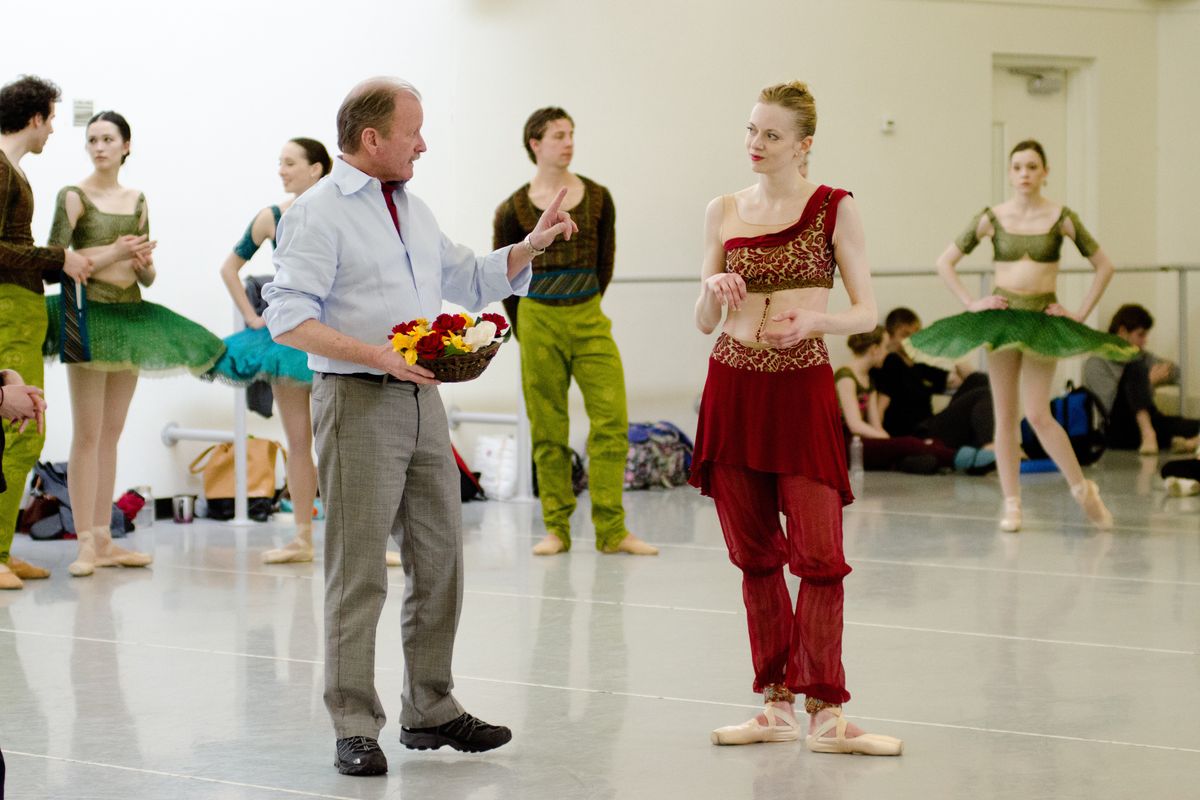Steel City Strength: Terrence Orr's Pittsburgh Ballet Theatre Offers Dancers a Supportive and Secure Career
This story originally appeared in the June/July 2016 issue of
Pointe.
“I was tricked into it,” says Pittsburgh Ballet Theatre artistic director Terrence S. Orr, recalling his introduction to ballet. As a young boy, he wanted to learn acrobatics, but when there wasn’t a beginning class available, the studio owner put him in ballet. By the time he realized he’d been duped, Orr was already enjoying it. He kept dancing, becoming a principal with San Francisco Ballet by 17. He then rose through the ranks at American Ballet Theatre, where he also served as ballet master and répétiteur.
These days it’s hard to imagine the forthright but affable Orr, now 72, being fooled by anyone. His commanding presence and clarity of purpose have helped position PBT as one of the nation’s top regional ballet companies and training schools.
In 1997, Orr replaced former New York City Ballet star Patricia Wilde as director of the company, which was founded in 1969 by Nicolas Petrov and Loti Falk. His accomplishments at the AGMA-participating troupe are noteworthy. After guiding PBT through financial troubles in the early 2000s, Orr oversaw the remodeling of its five-studio facility and acquired housing for out-of-town high school students in PBT School’s pre-professional division. Most recently, he spearheaded another expansion of the school, including two new studios and a wellness center.
Orr’s vision for the company goes back to when he applied to be artistic director. While Wilde had introduced more Balanchine works to PBT, Orr advocated for a more varied repertoire of full-length classics, famous ballets the company had never done and brand-new creations.
 Orr gives instructions to the Willis backstage in a production of PBT’s “Giselle.” Photo by Aimee DiAndrea, Courtesy PBT.
Orr gives instructions to the Willis backstage in a production of PBT’s “Giselle.” Photo by Aimee DiAndrea, Courtesy PBT.
In recent years, he has pushed to expand all three facets of that approach. “My dancers are a very talented and strong group from the corps up to principals,” he says. That confidence in his artists has led to PBT’s first full-length productions of La Bayadère and Le Corsaire; Pittsburgh premieres of influential works by Jirí Kylián, William Forsythe, John Neumeier and Jean-Christophe Maillot; and world premieres by Dwight Rhoden and Viktor Plotnikov. With that, the company’s budget has also grown from $7.3 million in 2010 to $9.8 million in 2016. This October, PBT will open its season with another ambitious production: Orr’s newly restaged Giselle.
Principal Christopher Budzynski is just one of the dancers attracted to PBT’s diverse repertoire. He describes Orr as a “very demanding but friendly and nurturing director. He encourages us not to be afraid of trying different things and doesn’t hold it against us if we fail.” Budzynski also likes the diversity at PBT. “The company is not cookie-cutter. There are different body types and personalities.”
Dancers tend to stick with the company for many years. Principal Julia Erickson, now in her 15th season, says, “we are everyone else’s cheerleaders. There is a respect for hierarchy, but a support system exists within the ranks.”
Dancers also benefit from the expert knowledge of Orr’s wife, company ballet mistress and former ABT star Marianna Tcherkassky. “It’s an education for them to have a ballerina of her stature around,” says Orr. Though he expects his dancers to work diligently and develop as artists, his specific expectations can differ for each person. “I am pretty patient,” he says. “If somebody gets into the company, I know that I have brought them in for the right reasons.”
Orr also encourages his dancers’ own creative interests. Several have choreographed for the school and company, most recently principal Yoshiaki Nakano. Erickson runs Barre, a line of energy bars and wellness products for dancers, with her husband, former PBT member Aaron Ingley.
A newer tradition that makes PBT stand out on a national level is its sensory-friendly performances geared toward children and adults on the autism spectrum. In 2013, PBT was the first American professional ballet company to produce an adapted Nutcracker, and they’ve since performed special evenings of Peter Pan and Beauty and the Beast, with quieter audio, less startling effects and more relaxed house etiquette.
In addition to continuing these performances, Orr says he’d like to add a few dancers to the roster and keep growing the school. He’s also interested in having more live music and touring. All of this upward momentum can be summed up by the person who knows Orr best. His wife, Tcherkassky, says, “Terry points us in a direction and says, ‘Hey, you want to go there? This is how we can do it.’ ”
Pittsburgh Ballet Theatre At a Glance
Number of dancers:
30
Length of contract:
38 weeks
Starting salary:
$1,028 per week
Performances per year:
50
Website:
pbt.org
Audition Advice:
One of the best routes into the company is through the PBT School. The company also holds an open audition in March and accepts videos year-round. If Orr is interested, the next step may be joining the school’s graduate program or being invited to take company class and meet with him for one-on-one interviews.
“The look of the dancer is very important,” says Orr, “and that can be defined in all kinds of ways. I want dancers who are not only great technicians but also gifted actors. An equally important part of the audition process is having conversations with the dancer to get to know their heart and how they will fit in.”





